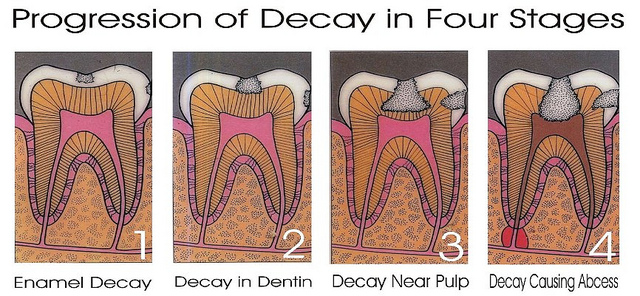- Painless dentistry
- Hidden/invisible braces
- Orthodontics
- BPS dentures
- Dental Implants
- Root canal treatment
- Children's Dentistry / Pedodontics
- Bad breath
- Scaling/cleaning of teeth
- Gum procedures/diseases
- Tooth colour fillings
- Veneers
- Bleaching
- Crown & bridges
- Wisdom teeth
- Treatment for TMJ problems
- Full mouth rehabilitation
- Conscious sedation
- Precision attachment based replacements
- Dental decay
Tooth decay is the process that results in a cavity (dental caries). It occurs when bacteria in your mouth make acids that eat away at a tooth. If not treated, tooth decay can cause pain, infection and tooth loss.
The combination of bacteria and food causes tooth decay. A clear, sticky substance called plaque that contains bacteria is always forming on your teeth and gums. As the bacteria feed on the sugars in the food you eat, they make acids. The acids attack the teeth for 20 minutes or more after eating. Over a period of time, these acids destroy tooth enamel, resulting in tooth decay.

Tooth decay usually does not cause symptoms until you have a cavity or an infected tooth. When this occurs, a toothache is the most common symptom.
Your dentist diagnoses tooth decay by:
- Examining your teeth, using a pointed tool and a small mirror.
- Taking X-rays of your teeth and mouth.
Treatment for tooth decay depends on how bad it is. To fix cavities caused by mild tooth decay , your dentist will fill the cavities with another substance (fillings). For more severe tooth decay, you may need a root canal and then crown. In extreme cases, your dentist may have to remove the tooth.


